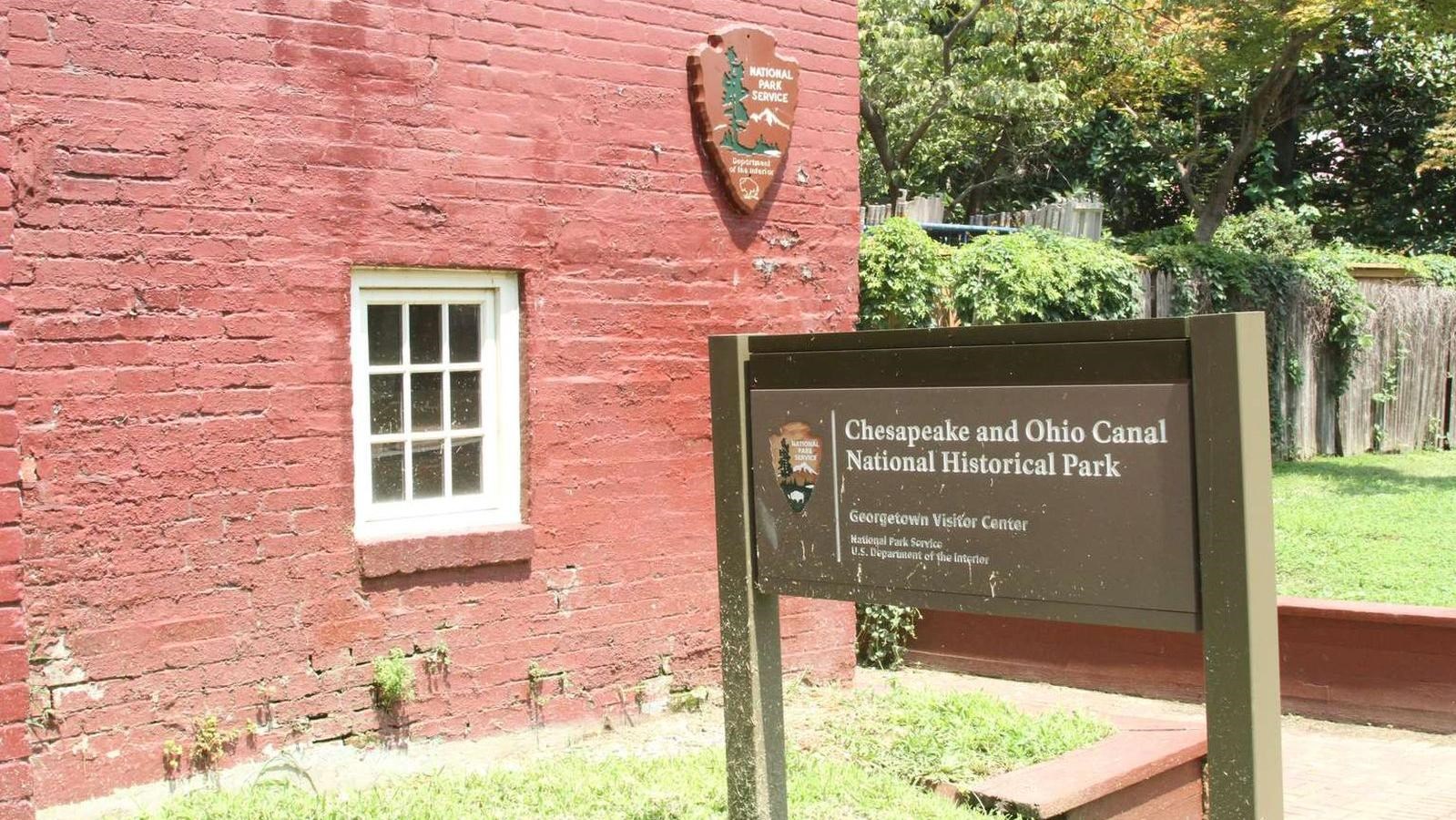Last updated: March 2, 2024
Place
Information Panel: Georgetown Visitor Center (Closed)

Historical/Interpretive Information/Exhibits
Georgetown became a port city soon after its 1751 founding. Located on the Potomac River, it was a logical choice for the canal's terminus. Canal activity further spurred Georgetown's economic growth. By the late 1800s, it was a bustling industrial port, with loads of cargo transferring between ocean-going ships, smaller boats, and wagons. On the canal, mule-drawn coal boats sidled up alongside Georgetown's warehouses to unload their freight. After their week-long journey down the 184.5 mile canal, canal families looked forward to the sights and sounds of Georgetown.
Construction of the canal began in 1828. Thousands of men, primarily immigrants, performed the backbreaking, dangerous work of digging and blasting through soil and rock. The skilled laborers, including stonemasons, carpenters, and blacksmiths created the dams, locks, culverts, aqueducts, and the Paw Paw Tunnel. Though each section of the canal started operating as it was completed, the entire route between Cumberland and Georgetown officially opened on October 10, 1850. After years of decreasing profits and devastating floods, operation of the canal ceased in 1924.
